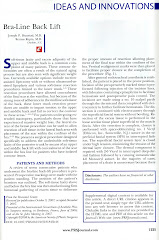The simplest way to define gynecomastia is: fullness of the chest area in males often centering around the areola. It can be caused by a number of different reasons, it can be present since early childhood or arise in adulthood, and it can be very small or significant in the extent of size.
The patients that I have seen and treated for gynecomastia could generally be categorized into three different groups shown below. The ideal treatment is based on the category of gynecomastia. Of course if there is a source to the gynecomastia such as hormone issues, or steroid use, etc these should be stopped or corrected.
Group 1: Patients who are otherwise overweight and have developed gynecomastia secondary to excessive fat deposits in the chest area are best treated with liposuction. The majority of the tissue that concerns these patients is fat and can be easily and efficiently removed with liposuction through small, 3 mm, micro-incisions.
Group 2: Some patients note that they have always had a little extra fullness around the areola. They are relatively thin and the tissue that bothers them is a little firmer but still largely soft. That is, there is some glandular tissue there but not overtly fibrous or firm. These patients can also be treated with liposuction especially if the tissue in question has an indistinct border and is relatively soft. Conversely, excision of the tissue through a small incision at the border of the areola and skin can also be performed. This is a good option if the tissue is smaller in size with relatively more distinct borders.
Group 3: These patients are usually body builders or have a history of steroid use. The chest tissue is usually very firm and very distinct from the surrounding normal tissue. Liposuction is not an ideal procedure as it rarely is able to remove enough of the tough fibrous tissue necessary to achieve the ideal results desired. These patients are often ideally treated with direct excision through a small incision at the border of the areola and normal skin.
In terms of anesthesia, both local anesthesia or IV sedation/general anesthesia can be performed based on patient preference and body characteristics.
The take-home point is that gynecomastia is much more common than most people realize and that easy solutions and satisfying results can be obtained.
All the best,
Phoenix/Scottsdale, AZ







